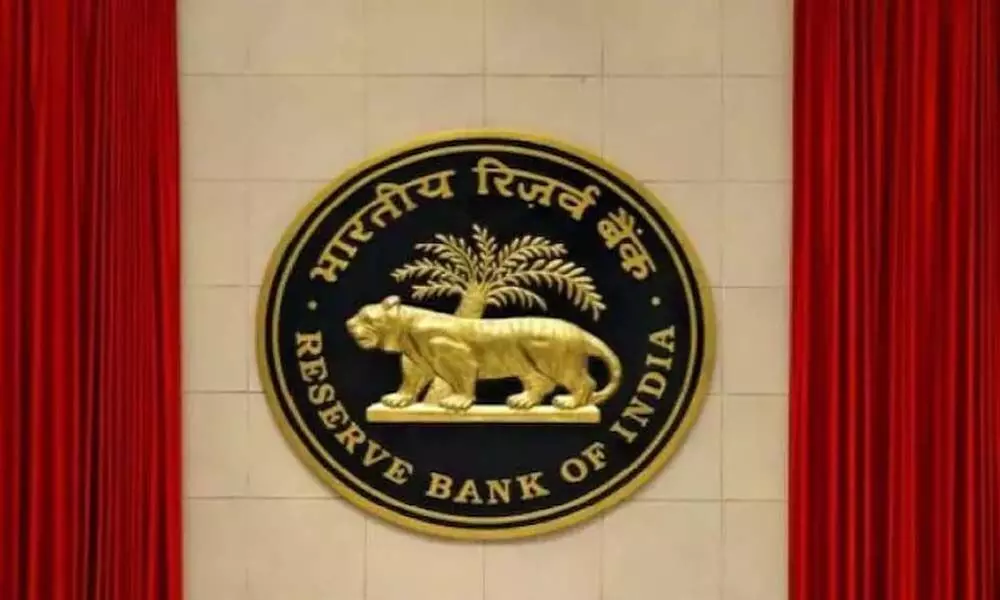Experts hail RBI's decision to maintain status quo on key policy rates
Experts have hailed. While Repo rates are continue to be at 4 per cent, Reverse repo rate will also remain unchanged at 3.35 per cent
image for illustrative purpose

Mumbai, Aug 06 Experts have hailed. While Repo rates are continue to be at 4 per cent, Reverse repo rate will also remain unchanged at 3.35 per cent.
RBI's decision to maintain status quo on key policy rates Commenting on the RBI policy announcement, the former CMD of Indian Overseas Bank, M Narendra told Bizz Buzz, "The uncertainties in the system are still continuing and economy is in the midst of revival and recovery. RBI has rightly decided to continue with the key policy rates at their existing levels. There are temporary inflation going beyond the targeted level of RBI to 5.7 per cent from earlier projected level of 5.1 per cent. RBI has also maintained GDP growth rate at 9.5 per cent as from July onwards they are seeing sign of recovery. Key factors like better GST collections are also showing normalcy as lockdowns are being lifted. Thus, the economy was expected to bounce back in the long run and achieve the level of 9.5 per cent as projected by RBI. RBI continues to be accommodative policy with necessary liquidity support and lower Repo rate will give the necessary push to all the sectors, hit by COVID-19 and the economy bounce back will be faster."
The MPC expectedly kept the key rates unchanged unanimously and reiterated its accommodative stance both on rates and liquidity. However, one dissent on continuation of accommodative stance for foreseeable future shows the emerging split getting generated within the MPC.
The MPC maintained that growth is still sub-par and needs consistent firm traction, and that continued policy support is vital for a durable growth revival. However, despite emerging inflation risks and sharp upward revision in FY22 inflation, MPC retained the view that inflation has transitory aspects, led by supply-side bottlenecks, even when they see inflation hugging the higher end of their tolerance band in the near term.
"However, the focus was on Communication on liquidity management key amid evolving market risks and the yield curve management. The RBI reaffirmed longer tenor VRRRs as the first step toward normalization amid current bumper liquidity surplus and reinstated that the normalization of liquidity operations should not be confused with liquidity tightening," Madhavi Arora, Lead Economist, Emkay Global Financial Services, said, The reintroduction of fortnightly VRRRs with higher quantum restates the same. We note the surplus liquidity has not necessarily percolated well across the curve or segments of the rates market as asymmetric gains in credit markets. This also raises the risk of rerouting of surplus liquidity and excessive risk taking in other asset classes. We do not see the VRRR quantum increase as a step towards Reverse Repo tightening in the near-term and still see that not happening in CY21.
On YCC, the RBI reiterating its support for the bond market and also indicating that they do not necessarily target any level or segment of the yield curve and would like to see active trading in all segments of the yield curve for its orderly evolution, she added.
Their statement on keeping a balance in on-the-run and off-the-run securities while conducting GSAPs is welcome as with markets were showing their discomfort with RBI's choice of papers for GSAP and devolution of papers at cut-off yields uncomfortable to the RBI.
However, the RBI still hinted at their preference for lower sovereign risk premia ahead. We reckon that even with yields inching up orderly and gradually, the RBI will continue to strive to fix the artificially skewed yield curve and maintain its preference for curve flattening.
We expect the RBI to get more accountable and action oriented as we move into 2HFY22. We maintain RBI may have to stretch GSAP/OMOs beyond
Rs 4.5-5tn+ to manage impending demand-supply mismatch, she said.
Ramani Sastri - Chairman & MD, Sterling Developers, said, "real estate has been one of the most resilient industries even amidst the pandemic
and has been showing signs of recovery. Demand stimulant measures like credit subsidy or tax waivers even for a limited period can play a transformative role until we reach the pre Covid-19 normalcy thresholds. While the government has been introducing several initiatives to help the sector, some strategic support in the form of giving input credit on GST and lowered GST on raw materials etc. will support sustainable long-term growth and benefit the developers as well as homebuyers."

